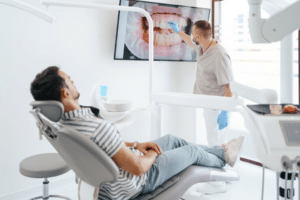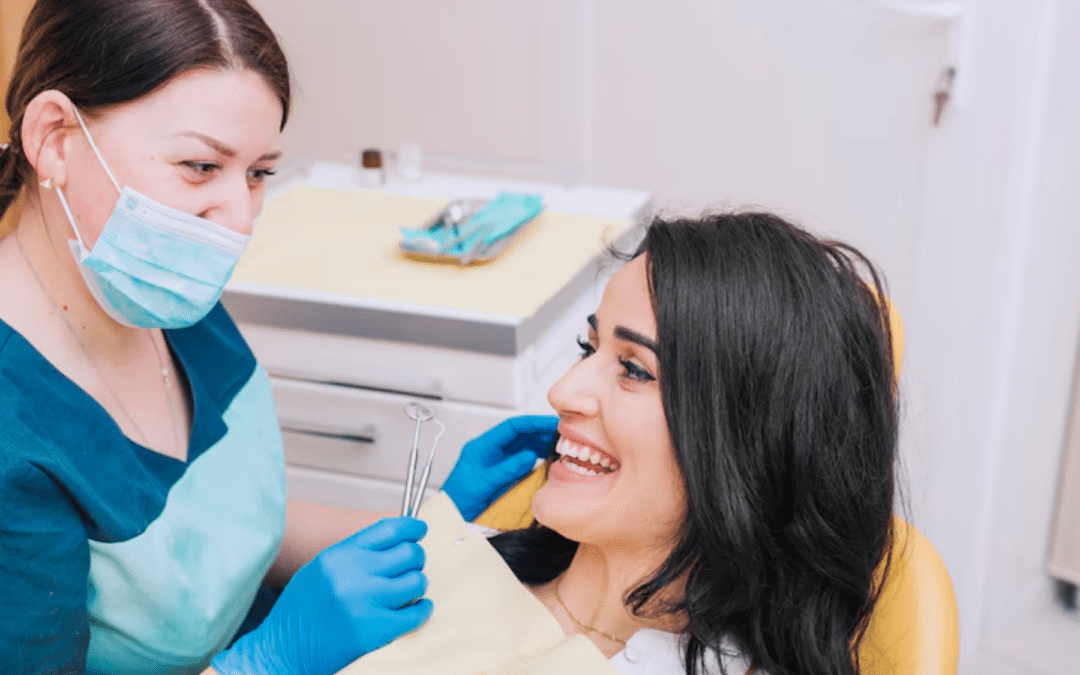For centuries, dentistry has continuously evolved, embracing innovative techniques and technologies to revolutionize oral healthcare. Today, we’re venturing into the intriguing realm of ozone therapy, a potential game-changer in the dental field. Ozone (O3) is a gas molecule composed of three oxygen atoms. It boasts powerful disinfecting properties and has been used for water purification and wound healing for decades. But can this versatile molecule translate its power into the realm of dentistry? Let’s embark on a journey to explore the exciting possibilities of ozone therapy in modern dentistry.
Brushing Up on the Basics of Ozone Therapy in Dentistry
Ozone therapy is emerging as a promising addition to the dentist’s toolbox. Let’s delve into how it works and the different ways it can be applied in your dental care.
Harnessing the Power of Ozone
The key player here is ozone (O3), a molecule formed from three oxygen atoms. Ozone therapy in dentistry utilizes a medical-grade ozone generator to create a controlled amount of this gas. This gas boasts unique properties that make it valuable in dental procedures:
- Potent Antimicrobial Action: Ozone acts as a powerful disinfectant, effectively targeting and killing bacteria, viruses, and fungi that contribute to dental problems like cavities and gum disease.
- Enhanced Healing: Ozone therapy is believed to stimulate the body’s natural healing processes. It may improve blood circulation and oxygen delivery to the treatment site, promoting faster healing and tissue regeneration.
- Reduced Pain and Inflammation: Studies suggest ozone can help reduce inflammation and pain associated with various dental procedures. This can lead to a more comfortable recovery experience.

Potential Benefits of Ozone Therapy in Dentistry
Ozone therapy is emerging as a promising addition to the dentist’s toolbox, offering a range of potential benefits for promoting oral health. Let’s delve deeper into some of the exciting possibilities:
Broad-spectrum antimicrobial power: Ozone’s potency lies in its ability to disrupt the cell walls of bacteria, viruses, and fungi. This disrupts their growth and function, effectively eliminating a wide range of oral pathogens.
Targeting hidden enemies: Unlike traditional disinfectants, ozone gas can reach into microscopic crevices and dentinal tubules, where bacteria can hide and contribute to cavities and gum disease.
Reduced risk of antibiotic resistance: The overuse of antibiotics in dentistry can contribute to the rise of antibiotic-resistant bacteria. Ozone therapy offers a potential alternative for managing infections without promoting resistance.
Boosting blood flow: Ozone therapy is believed to stimulate the production of nitric oxide, a molecule that relaxes blood vessels and improves blood circulation. This enhanced blood flow delivers vital oxygen and nutrients to the healing site, accelerating the repair process.
Growth factor factory: Studies suggest ozone can trigger the production of growth factors, natural proteins that play a crucial role in tissue regeneration. This can promote faster healing of wounds after dental procedures like tooth extractions or gum surgery.
Taming inflammation: Ozone’s anti-inflammatory properties can help reduce swelling and discomfort after dental procedures, contributing to a smoother and more comfortable recovery experience.
Important Considerations and the Road Ahead for Ozone Therapy
Ozone therapy has emerged as a fascinating tool in the dental field, but before widespread adoption, some crucial considerations need to be addressed:
Ozone therapy may not be a one-size-fits-all solution:. Dentists will need to carefully assess each patient’s individual needs and medical history before recommending ozone therapy. Certain factors, such as underlying health conditions, medications, and allergies, might influence a dentist’s decision to incorporate ozone therapy into a treatment plan.
The dental profession prioritizes treatments supported by strong scientific evidence: While exploring new techniques is important for advancing the field, integrating ozone therapy will require continued research with rigorous methodologies. This research should focus on generating robust data to establish ozone therapy’s place within the dentist’s armamentarium of tools.
The realm of dentistry is constantly evolving, and ozone therapy represents a fascinating potential addition to the dental toolbox. While further research is necessary, the potential benefits of disinfection, wound healing, and pain management are certainly intriguing. As we move forward, the focus should remain on responsible integration, prioritizing patient safety, and conducting robust clinical trials to establish ozone therapy as a valuable tool within evidence-based dentistry.



